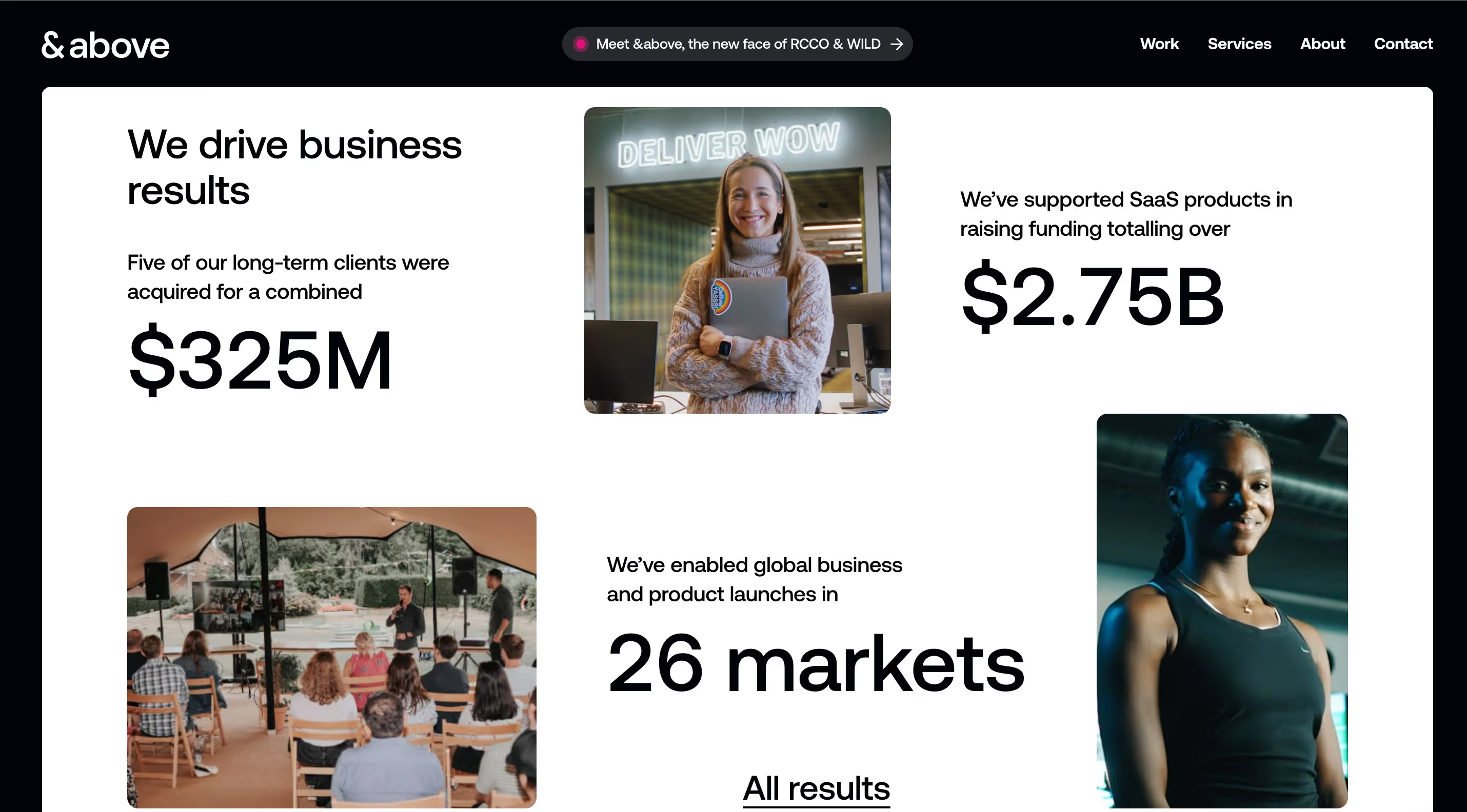
How did your journey into AI begin?
I started as a designer while still in school, selling custom phone cases I made myself. That early tinkering mindset never left. During a three-year apprenticeship at Google as an in‑house designer, I was exposed to Google’s AI-first vision - from DeepMind’s breakthroughs to AI embedded in products. When I left to co‑found &above, AI quickly became central to the products and experiences we design for clients, both customer-facing and operational.
What’s a personal example of AI you like to reference?
Gemini Canvas helped me design a flower bed in minutes. Now I’m a budding landscaper. The before and after picture always goes down a treat in workshops. I uploaded a photo, listed constraints (dog‑safe plants, maintenance needs), and Canvas prototyped a simple app that guided selection and placement. It’s a fun example, but it shows how fast you can learn, prototype, and translate ideas into outcomes.
What traits matter most for succeeding with AI?
- Always be learning. For me, that is through experimenting. I trial new tools constantly - hands-on exploration keeps you current.
- Get 1% better every day. Break the big North Star into small, consistent steps. We run “wash up” retrospectives to compound learning.
- Move at pace. Tackle the hardest task first (“eat that frog”) to avoid busywork and keep momentum.
Can you share a concrete business case where AI moved the needle?
With Google Cloud sellers, the challenge was scale and complexity: hundreds of evolving products, materials scattered across the intranet, and a bias to sell what you already know. We built a 3‑month MVP that centralised product documentation and layered a Gemini conversational interface for discovery. Over time we integrated customer intelligence, pulling data on account maturity, and agentic workflows that help assemble sales journeys. &Now even generation of pitch materials from best‑performing decks and stories. The impact: 5,000+ daily users, higher seller efficiency in A/B tests, and a clear path to increased opportunities.
What misconceptions slow companies down?
We need perfect data before we start.
You don’t. Start with one high‑value data source, deliver 80% of the value quickly, then iterate. With Google Cloud we began with one source and added two more later to enrich the seller intelligence.
“Buying tools equals transformation.” It doesn’t. You need training, behavior change, and a plan to build an AI‑native workforce. Today, AI augments teams more than it fully automates them.
How should organizations roll out AI capability?
Think in five levels:
- Basic adoption: Give everyone access to a secure LLM for writing, ideation, and time savers (e.g., meeting transcription, but use with care to avoid logging the wrong chat).
- AI squads: Cross‑functional evangelists who build lightweight augmentations (e.g. an OKR generator Gemini Gem that helps their teams to write goals effectively).
- Central AI excellence hub: Internal tooling and data architecture. For example, the Google Cloud knowledge core we built that unifies intranet materials from documents to sites &customer stories. Using Gemini as the LLM for retrieval and reasoning accelerated team efficiency.
- Custom AI products: Build domain-specific agents. For example we built a “Creative Intelligence Agent” that fuses channel performance, messaging, and creative to enable marketing to make data-driven decisions that learns over time.
- Multi‑agent orchestration: Chains of specialised agents collaborating on non‑linear workflows. For example, we built agents that completed compliance checking of an ad against platform and brand guidelines, then auto‑updated the creative to fix issues.
What’s the smartest way to start on a tight budget?
Centralise LLM access (e.g. Gemini or ChatGPT) and adopt a proof‑of‑concept mindset. Define a measurable goal, sandbox the work, use test data, and treat every AI effort like a product: do discovery first, validate quickly, and kill what doesn’t perform.
Where is AI right now—and where is it headed?
We’ve moved from predictive systems to GenAI and are now in the agentic era. Today is about augmentation: inserting AI into workflows to amplify teams. Over the next 5–10 years, more workflows will automate end‑to‑end. Roles will change, some will disappear, many new ones will emerge. Continuous learning and retraining are essential.
Which business areas benefit most from AI today?
- Customer experience: Faster, more personalised support and product interactions that learn over time.
- Operations: Augment and automate high‑impact workflows to unlock efficiency.
- Marketing: Data‑driven creative and messaging, tighter feedback loops, and better ROI through intelligent experimentation.
How can leaders de‑risk AI adoption while maintaining speed?
- Start narrow with a clear problem statement and success metric.
- Ship a small POC in weeks, not months.
- Instrument everything - track usage, time saved, quality uplift.
- Iterate in short cycles. Expand data sources and capabilities as value is proven.
How should companies think about AI’s impact on people?
AI success is as much about people as tech. Design AI for humans - fit it into the way teams actually work, upskill continuously, and make the augmented workflow the default. Set expectations: systems should learn; users shouldn’t have to repeat themselves. Meet rising customer standards or risk losing them.
If a company wants to partner with &above, what can they expect?
We flip the traditional consultancy approach bringing enterprise experience at startup speed. We start with discovery to target the highest‑leverage problems, prove value fast with safe POCs, and scale from basic adoption to multi‑agent systems when the data and org are ready. The goal isn’t AI for its own sake, it’s measurable business value.
Closing thought
The art isn’t building flashy demos - it’s turning curiosity and fast experimentation into scalable business outcomes. Start small, move quickly, learn continuously, and design AI around people.




